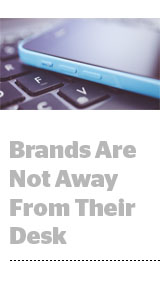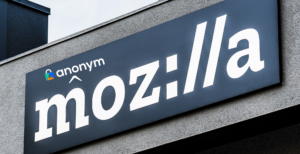 Over the last five years, the InterContinental Hotels Group went from $2 million in mobile booking revenue to just under $1 billion.
Over the last five years, the InterContinental Hotels Group went from $2 million in mobile booking revenue to just under $1 billion.
But that doesn’t mean IHG has any plans to chuck its desktop experience, said Michael Menis, the company’s SVP of digital and voice channels, speaking at ad:tech San Francisco on Thursday in a session moderated by Sridhar Ramaswamy, Google’s SVP of ads and commerce.
“Web is not yet dead,” Menis said. “We’ve seen this exponential rise in mobile, [but] it doesn’t mean that we’ve seen a drop-off in web. It still requires, in our world, a team dedicated to understanding the role that this form factor can play in improving our guest experience.”
It’s a sentiment quite contrary to that of Flipkart-owned Indian fashion e-tailer Myntra, which recently took the, some might argue, drastic step to shut down both its m.dot site and its desktop site, choosing instead to focus solely on its app because, as Abhishek Rajan, Myntra’s head of mobile put it to AdExchanger, “Desktop is not a place where we’re seeing growth.” [It’s worth noting that Myntra’s sales dipped 10% after it went app-only last week.]
Although it’s true that IHG and Myntra have fundamentally different businesses and value propositions, mobile-first doesn’t necessarily have to mean mobile-only.
“The reality is that you still have to develop across the platforms,” said Darren Stoll, group VP of interactive marketing and analytics at Macys.com.
For Macy’s, mobile’s role in the customer journey has evolved over the last several years. Back in 2012, when a customer first engaged with the brand on a smartphone, that person was twice as likely to shop on desktop within the next seven days. Today, consumers are twice as likely to convert on a smartphone as they are on a desktop within that same one-week period.
“Clearly, that behavior is evolving … [but] I don’t want to get rid of the desktop,” Stoll said. “I want to understand how mobile has connected that experience with the desktop.”
Macys.com’s in-house analytics team is deeply in the weeds when it comes to its work around store influence and activity metrics. The company, which has two analytics-related patents of its own, has also been experimenting with Google’s local inventory ads, formerly known as local product listing ads.
“If you go way back, there was always the Internet fueling sales from the store, so we started to do work around understanding how the interaction on Macy’s.com impacted the store,” Stoll said. “Now, with mobile, really identifying how these things connect is critical.”
Part of that comes down to more lateral thinking around analytics as consumers move through what Stoll referred to as the “fractured funnel.”
“Click times conversion equals sale” doesn’t tell the whole story, he said.
“The big shift for us and the continued aspiration is to be customer-centric in our analysis instead of just looking at that single touchpoint,” Stoll said. “Life is now addressable.”
In other news, Ramaswamy announced at ad:tech San Francisco that Google would be adding shoppable elements to its skippable TrueView ad offering on YouTube. TrueView for Shopping will give brands the ability to feature products directly within the pre-roll. But rather than being able to make purchases on YouTube itself, viewers that click on the ad will be sent to the brand’s website to buy.
Correction: A previous version of the story noted that Macy.com used Google’s Store Visits metric.











